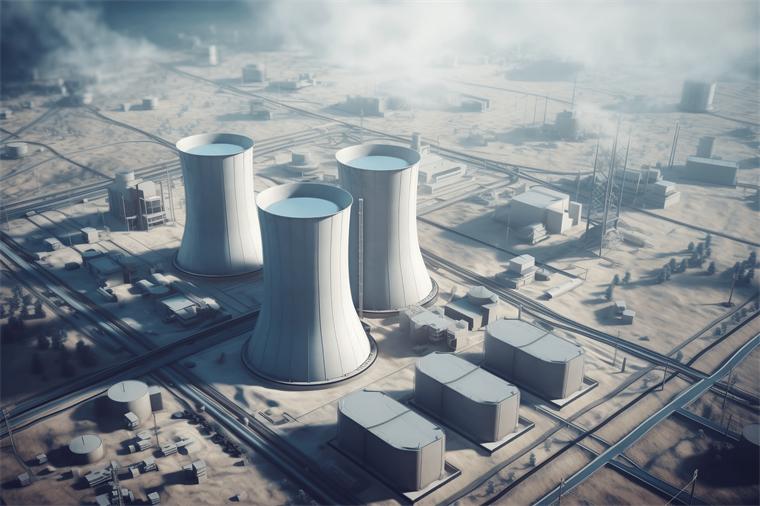
Driven by climate change and energy transition, nuclear energy, as a low-carbon, efficient and stable energy form, is becoming a key force in the global energy system's reconstruction. China's nuclear power industry, with continuous technological breakthroughs and large-scale development, is accelerating its move to the center of the global nuclear power landscape. By 2025, the total number of operational, under-construction and approved nuclear power units in China reached 102, with a total installed capacity exceeding 113 million kilowatts, making China the world's largest for the first time. This milestone achievement has laid a solid foundation for China to become the world's largest nuclear power producer by 2030.
I. Large-scale Construction: From "Following" to "Leading"
The large-scale development of China's nuclear power industry shows a "dual-track parallel" feature. On the one hand, the scale of operational units continues to expand. By the end of 2024, China had 57 commercial nuclear power units in operation, with an installed capacity of 59.76 million kilowatts, generating 444.7 billion kilowatt-hours of electricity, accounting for 4.72% of the country's total electricity generation, and equivalent to reducing 334 million tons of carbon dioxide emissions. On the other hand, the number and scale of units under construction lead the world. The total installed capacity of 28 units under construction is 33.7 million kilowatts, ranking first in the world for 18 consecutive years. In 2024, the investment in nuclear power engineering construction reached 146.9 billion yuan, a record high, demonstrating the strong momentum of industrial development.
This achievement is attributed to the independent breakthroughs in China's nuclear power technology. The third-generation nuclear power technologies represented by "Hualong One" and "Hualing One" have entered the stage of batch construction, among which "Hualong One" has 7 units in commercial operation at home and abroad and 26 units approved for construction. Significant progress has also been made in fourth-generation nuclear power technologies: the world's first commercial modular small reactor "Linglong One" completed the installation of the outer dome and is expected to be put into operation in 2026; the research and development of new reactor types such as high-temperature gas-cooled reactors and sodium-cooled fast reactors is advancing steadily. These technological breakthroughs not only enhance the safety of China's nuclear power but also strengthen its international competitiveness.
II. Technological Iteration: Upgrading from "Single Application" to "Diverse Innovation"
The innovation path of China's nuclear power industry exhibits a closed-loop characteristic of "technology - industry - application". In the field of nuclear power equipment manufacturing, China has achieved 100% domestic production of key main equipment, with a cumulative delivery of 114 sets by 2024, doubling that of 2023. In terms of nuclear fuel cycle technology, the research and development of advanced domestic fuel assemblies is ongoing, and accident-tolerant fuel assemblies have completed full-cycle commercial reactor operation tests. Breakthroughs have been made in high-level radioactive waste treatment technology, and the self-developed two-step cold crucible glass vitrification technology is ready for engineering application.
The expansion of nuclear energy's comprehensive utilization further unleashes the industry's potential. During the 2024-2025 heating season, China's nuclear energy heating area reached 14.02 million square meters, and the first project in the country to supply steam to a petrochemical park, "Heqi No.1", was completed and put into operation. This "nuclear energy +" model not only enhances energy utilization efficiency but also opens up new market space for the nuclear power industry.
III. Strategic Opportunities: Extending from "Domestic Market" to "Global Layout"
China's global layout of the nuclear power industry has begun to bear fruit. By 2025, China has cumulatively exported 7 nuclear power units, and the construction of the fifth unit of the Chashma Nuclear Power Plant in Pakistan, using "Hualong One" technology, has started. In the field of nuclear technology application, China has carried out cooperation with Thailand, Bangladesh, Hungary, and other countries in nuclear medicine, nuclear agriculture, and other areas. Bilateral cooperation between China and Russia, France, Kazakhstan, and others has been continuously deepened, and the stable operation of the Rossing and Husk uranium mines in Namibia, Africa, provides resource guarantees for China's nuclear power industry.
The International Atomic Energy Agency (IAEA) has continuously raised its global nuclear power development forecast for four consecutive years, and 31 countries and regions have signed the "Triple Nuclear Energy Declaration", creating a favorable environment for China's nuclear power "going global". China has further consolidated its influence in global nuclear energy governance by deeply participating in the ITER (International Thermonuclear Experimental Reactor) project and opening 12 nuclear research facilities.
The rise of China's nuclear power industry is not only an inevitable choice for energy transformation but also a demonstration of technological innovation. The goal of becoming the world's largest nuclear power producer by 2030 is not only related to energy security and low-carbon transformation but will also reshape the global nuclear energy industry landscape. In this process, China needs to drive with technological innovation, adhere to safety supervision as the bottom line, and take international cooperation as a bridge to promote nuclear energy to become a "stabilizer" and "ballast stone" for humanity in addressing climate change.

Recently, according to 9To5Mac, the Apple Podcasts app was exposed to have the problem of automatically redirecting unsubscribed programs, and some of the redirected programs were suspected to contain malicious links.
Recently, according to 9To5Mac, the Apple Podcasts app was …
Recently, multiple Federal Reserve officials have publicly …
Ukrainian President Vladimir Zelensky met with French Presi…
In November 2025, South Korean e-commerce giant Coupang was…
On December 2, 2025, the international silver market witnes…
On November 30 local time, a report released by the Stockho…